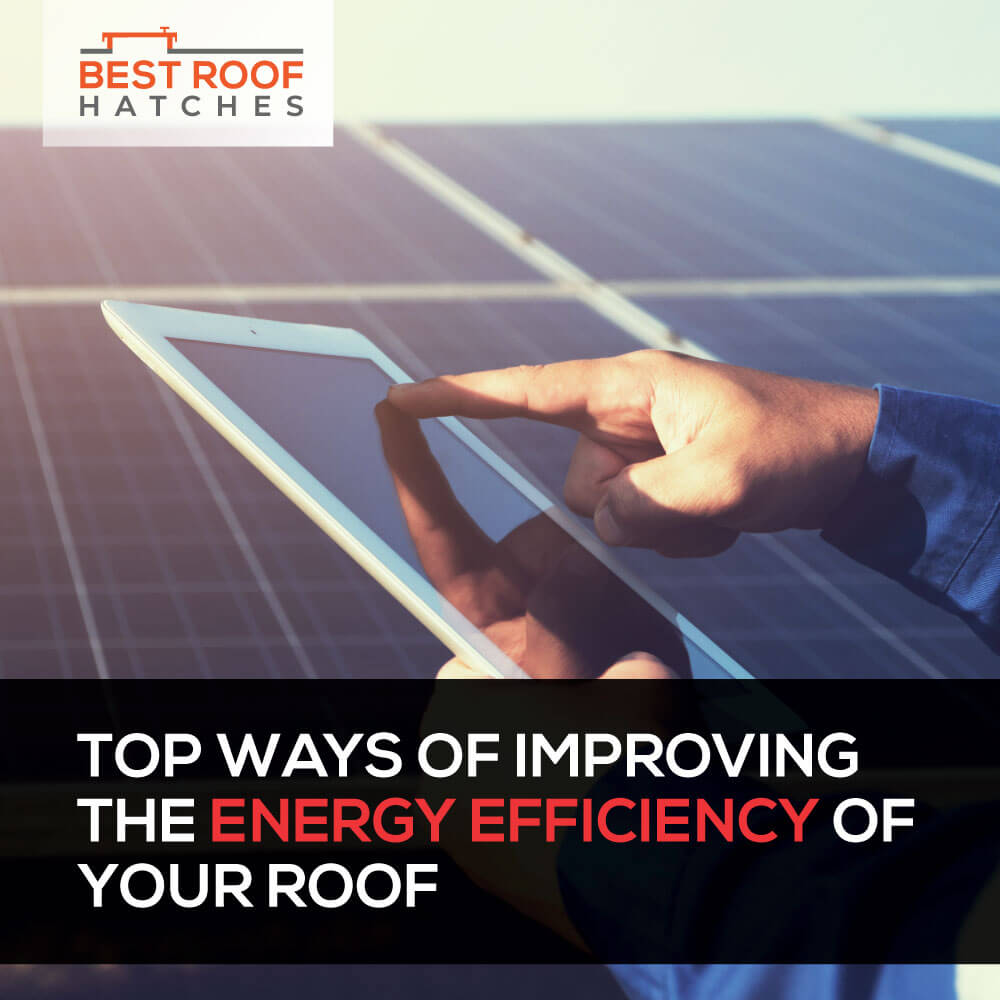Share this
Top Ways of Improving the Energy Efficiency of Your Roof
Posted by Best Roof Hatches on 2021 Nov 10th
Getting your property highly energy efficient is essential in modern living since it lowers utility bills, improves comfort, and is environmentally friendly. There are several ways you may take to increase the efficiency of your building. Caulking or repairing windows, building an energy-efficient HVAC system, and ensuring appropriate insulation are all examples of these methods.
On the other hand, the roof has a significant influence on a home's total energy efficiency. You'll enjoy even more comfort and money savings all year round if you improve the efficiency of your roof, especially if you regularly maintain and use energy-efficient roof hatches for optimal results. You can improve your roof's energy efficiency by doing these three ways:
Upgrade Your Insulation
Many people are still in a state of shock to find that adequate insulation can prevent excess heat from going out of a building during the summer and retain it during the winter. At its most basic level, insulation has a design that limits heat transmission from the outdoors to your living area.
It's critical to consult a roofing specialist about the best energy-efficient roof insulation for your attic and roof, as insufficient insulation can lead to humidity issues, which can harm your roof and property. Insulation may need to be installed in a particular manner depending on your property and environment to avoid moisture from becoming trapped between the insulation and the roof and producing condensation.
Proper ventilation prevents condensation and improves energy efficiency by enabling hot air to leave as needed. For example, effectively insulating your attic and the region directly below your roofing material may save your overall energy use by 11%. Other frequent locations where your roof might be hurting your home's overall energy efficiency include gaps and holes.
Air sealing is the procedure of closing up these open spaces, and you should have it in every thorough insulation upgrading job. Just ensure that you do all your installations through a roof hatch that comes with ladder access for efficiency and safety purposes. It's a fantastic installation for regularly scheduled roof inspections.
Select a Roofing Material That Reflects Heat
It is critical to know what type of roofing material you need. Understanding the different types of cool roofs may help you if you live in a hot environment with lighter-colored roofing materials. Roofs with light colors conserve energy by reflecting the sun's beams. Dark roofs absorb and transfer heat at a higher temperature than the ambient temperature.
The dark color causes interior rooms to become heated and air conditioners to work overtime, increasing the energy expenditure. To conserve energy, you may apply reflective coatings to dark roofs after they've been built or even paint a ceiling brighter. Because a lighter-colored roof absorbs less heat than darker ones, you may either change your shingles with lighter-colored ones or apply a cooling coating to your top.
Cooling coatings are lighter, so you may consider them if your roof is in good shape and not in need of repair. A coating prevents darker-colored tiles from absorbing UV rays while also providing further moisture protection. A roofing professional can inspect and assess your roof and advise you on the best ways to decrease heat absorption and retention and improve the energy efficiency of your roof.
Install a Heat Recovery Ventilator in Your Attic
While it is critical to eliminate undesirable cracks, air holes, and gaps in your house, it is equally vital to ensure that you can vent the air within your building back outside, ensuring that you have a consistent supply of fresh air. You may have more command over the temperature stability immediately beneath your roof and eventually in your living space by regulating the airflow in and out of your house through appropriate ventilation in your attic.
An energy-recovery ventilator (ERV) or heat recovery ventilator (HRV) installation is a complete solution for obtaining control over your building's ventilation. If you're using the ambient heat in your building, these ventilation systems may lower the strain on your heating and cooling system by 9 to 12 percent. HRVs or energy recovery ventilators (ERVs) are an excellent method to save energy costs while improving your indoor air quality.
To acquire a good grasp of what your roof demands, examine the circumstances of your roof and the environment. Talk to your roofing contractor if you want to add insulation and an energy-saving roofing system, or learn about the most effective and most suitable products for your property.
If you need roof hatches for your future roofing projects, look no further and visit https://bestroofhatches.com/. We offer various products from trusted brands, all categorized for your convenience. You can call 1-800-431-8651 for more inquiries. If this topic intrigued you, you could also visit our blogs to read more.

